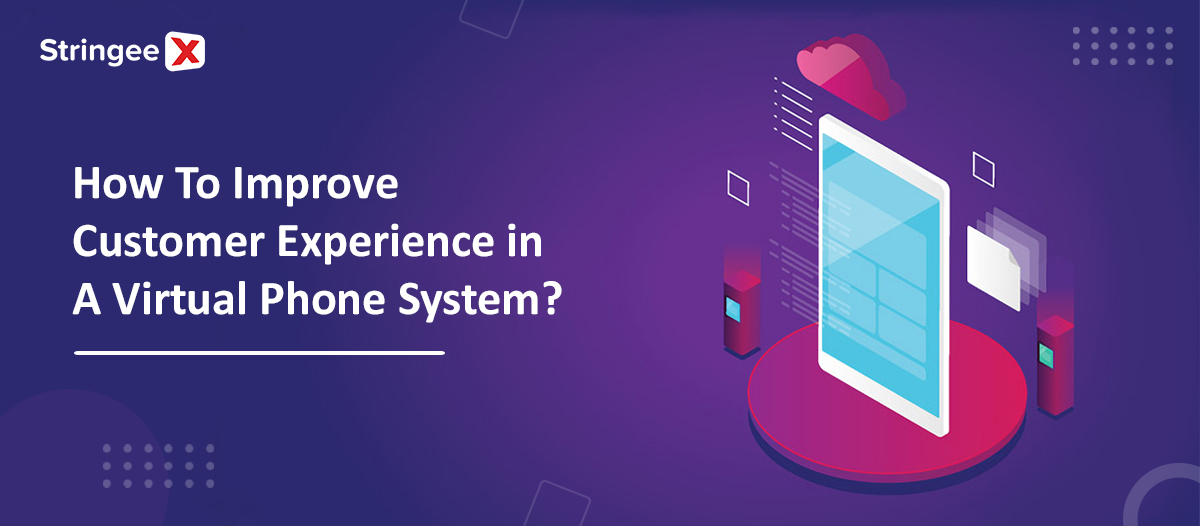Customers continue to believe that speaking with a live person on the phone is the most reassuring and practical means of communication even in the age of social media and live chat. Businesses must take phone support seriously if they want to improve their level of customer service. In that case, a virtual phone system can be useful.
In the future, 82% of American consumers want to contact people more. On all platforms, the technology that supports human contact must be smooth and undetectable. – PwC Studying is nothing without experience
To satisfy client expectations and offer a customized experience, your company should use a virtual phone system. Read on to get a deeper understanding of how to improve customer experience in a virtual phone system.
What Is A Virtual Phone System?
A virtual phone system is a cloud-based phone system that enables users to make and receive calls from anywhere using their laptop or mobile device. It gives businesses the mobility and flexibility that conventional on-premise solutions cannot. Because the service is supplied online with reasonable plans and pricing, there is no need for hardware.
How To Improve Customer Experience in A Virtual Phone System?
Understand your customer
Customers can keep more information than just their demographics. They also have various interests, wants, and desires, but most importantly, they have various expectations when calling your hotline. Your support teams may suffer if you use a single approach to manage many customers.
For instance, you have skillful agents who work hard to establish rapport and demonstrate empathy by mentioning how they dealt with a similar problem. Now, every consumer might not necessarily find this useful because they might think it is a waste of time.
Some clients are analytical, while others are more expressive. The "different strokes for different persons approach" must be used to enhance customer service at the call center. You can create a persuasive pitch that meets each customer's specific needs by having a thorough understanding of the various customer personality types.
Personalize Every Call
Unfortunately, this aspect of customer service is frequently ignored. This factor—exposed to the front lines—often turns out to be the one that enables you to improve customer experience, generate more revenue, and fully stretch your wings.
Your inbound call center likely receives hundreds of calls every day, making it difficult to add uniqueness to each one. However, when clients call your company, the last thing they would want is a robotic assistant delivering cliched information.
Even before they greet you, it's critical to remember who is on the other end of the call. Your agents can track down every nuance of a customer's information from their number with ease if you have a centralized CRM.
Leverage Interactive Voice Response (IVR)
Imagine that after your clients have waited for a while, they are connected to the incorrect person or department. This terrible error may enrage them even more. Utilizing cutting-edge tools and technology should be a key component of your customer experience plan in 2020. Systems like the IVR might provide you with a significant advantage over your rivals in the support battle.
IVRs are automated speech systems that answer incoming calls and direct callers to the proper department. In addition to saving precious time, IVR gives off a more professional vibe and gathers essential data that gives your support team a head start even before the call is connected.
>>> Read more: What is IVR? Its definition & benefits
Focus on Call Flow Management
Once your customer service number is active, you'll inevitably start getting calls from both new and returning customers. Everything could, however, go awry if there is no efficient system in place to control the call flow. Even one hour of call overflow can damage your company's reputation, which you've worked so hard to build.
Of course, not every agent can perform all tasks. While one agent may excel at inbound sales, the other may have the technical know-how for handling challenging situations. To make sure that the proper calls are automatically directed to the employees who are qualified to handle them, reliable call center software should be deployed.
Check the call management process frequently to identify bottlenecks. For instance, calls that are regularly routed to voicemail or to the wrong department can be huge red flags.
Train Your Agents Continuously
The client experience can be severely hampered by a customer support agent who is unfamiliar with your goods or services. Half-knowledge can be dangerous, thus you cannot afford to let any inexperienced person handle consumer calls.
The secret to raising the bar for customer service at your call center may be consistent, tough training. Agents with extensive training stay current on industry changes, have increased skill sets, and have the utmost empathy for their clients. Additionally, training lessens the need to employ new talent because your current team can address any skill gaps that may already exist.
Decrease On-hold Time
Nobody likes the thought of waiting. Overusing the hold feature may be a warning sign for your company and point to a skill or training gap among your agents. Even if the majority of callers would hang up if kept on hold for too long, this does not imply that the call is unimportant in their eyes. When a customer feels that your company doesn't value their time, they hang up.
To avoid having to place a customer on wait for an excessive amount of time, you must provide your agents with the necessary knowledge and resources. You must provide a callback service so that clients can get in touch with you rather than waiting patiently on hold for a resolution in situations where the problem may need more investigation.
Improve First Call Resolution
One of the best practices for call centers is improving the FCR and for good reason. This key number measures how well your team can address customer concerns or complaints the first time they contact you, without the need for any follow-up. If a consumer needs to contact your company more than once for the same problem, your customer care system is usually ineffective.
Start by identifying similar problems that can be resolved quickly in contrast to those (certain technological problems) that may require more time to resolve. Additionally, make an effort to eliminate call transfers because each change in the phone line significantly lowers consumer satisfaction.
Reduce customer workload if you want to improve call center customer experience. For instance, you can start a callback when service is restored or when an appointment has been made to prevent people from phoning you again.
Embrace Every Customer Feedback
Modern consumers frequently discuss their opinions of a service or an encounter with their social circles. For your company to gather insightful client feedback, you must also participate in this feedback loop. A call's end is not the end of the client experience; rather, it marks the start of your learning process.
Immediately following the call, you can send survey links via text message or email to collect consumer feedback. The findings can be utilized to better understand agent performance, customer pain spots, and customer happiness.
Enhance Better Customer Experience With StringeeX’s Virtual Phone System
An investment in a virtual phone system can help your staff deliver great client experiences, boosting profitability while saving money on hardware costs. The StringeeX solution can provide a seamless experience for customers. Get in touch with us here if you want to learn more.










